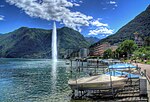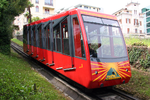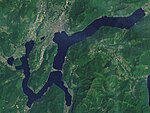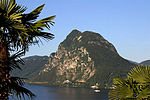Capo San Martino
Capo San Martino is a locality in the municipality of Lugano, Switzerland, situated on the eastern side of Monte San Salvatore, along the cantonal road that connects Lugano with Melide. As the name suggests, Capo San Martino ("Cape of Saint Martin") is a natural cliff overlooking Lake Lugano. Historically, the locality of Capo San Martino was also known as Forca di San Martino ("Saint Martin's Gallows"), because capital punishments by hanging were executed there. The last hanging took place in 1804.Until 1861, Capo San Martino was in Italian territory, as it belonged to Campione d'Italia. In 1863, Capo San Martino became a hamlet of Pazzallo, then still an independent municipality in the district of Lugano.During the 19th century, a lime furnace operated from Capo San Martino, along the lake shore. This furnace was just one among several others in Caslano, Melide, Castagnola, Pazzallo, Cimadera, and Melano, which exploited the abundant deposits of limestone of the Sottoceneri region for the production of lime.
Excerpt from the Wikipedia article Capo San Martino (License: CC BY-SA 3.0, Authors).Capo San Martino
Riva Paradiso, Circolo di Lugano ovest
Geographical coordinates (GPS) Address Nearby Places Show on map
Geographical coordinates (GPS)
| Latitude | Longitude |
|---|---|
| N 45.983055555556 ° | E 8.9561111111111 ° |
Address
Riva Paradiso
6912 Circolo di Lugano ovest
Ticino, Switzerland
Open on Google Maps









